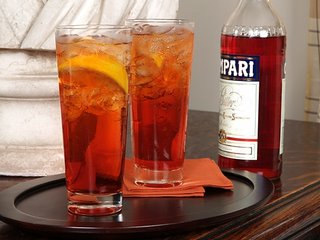Although Restaurant Girl Speaks is more of a ranting gossip blog than a bonafide food blog, I'm finally including a recipe to cook something South American at the request of one of my readers. This recipe for Empanadas de Pino was torn directly from the
Footprint guide to Chile, which Valentino's dad (who was a chef for years at
42 Degrees before it went away) gave me before I left to stay with his family here. He says it's authentic, and he's a bitchin' cook (anyone who gleefully announces on Superbowl Sunday, "Hey guys, I got a deep fryer! What should we put in it?" while sipping a beer at 11am is alright in MY book) so I believe him. Here it is:
"Although other fillings are used nowadays for empanadas, the traditional filling is pino, a mixture of meat, onions, and spices. Most Chilean families have their own recipes: this one was kindly supplied by Manuel and Ximena Fernandez.
Ingredients (to make 20 empanadas--they're small).
Pastry: 1 kg flour; 125 grams margarine, butter, or lard; 1 level spoonful salt; cold water.
Filling: 600 grams meat, chopped into small pieces (or lean minced meat); 2 large onions; 4-5 tsp. cooking oil; tsp. each of cumin, black pepper, chili powder, and paprika; 3 cloves garlic, finely chopped; salt to taste; 4 hardboiled eggs; 1 tsp. flour; 20 black olives; 40 raisins.
Methods
Pastry: in a bowl mix the flour and margarine, add salt (dissolved in 1/2 cup water), gradually add more water to make a soft but consistent pastry and leave it for at least 1 hour, then knead it for 10 minutes before replacing it in the bowl and leaving it covered with a clean cloth.
Filling: heat the cooking oil in a large pan or pot, then add the onion and fry for about 8 minutes. Add spices and salt, then fry for 2 minutes. Add meat and fry for 15 minutes, stirring continuously, until the onions are crystal-like and softly cooked. Add the flour, lower the heat, and simmer for 5 minutes. Leave the mixture overnight. Shell the eggs and cut each lengthwise into 5 pieces.
Making the empanadas: Divide the pastry into 20 pieces, then roll each piece into a thin round shape. One one hemisphere of each piece of pastry place the following: 1 piece of egg; 1 heaped teaspoon of the filling; 2 rasins and 1 olive. Carefully paint the rim of each piece of pastry with water, then fold the empty hemisphere over to enclose the filling, press the rim down. You should now have a semicircular turnover: paint the outer rim with water and fold it down again towards the center of the empanada.
Bake the empanadas in a preheated oven at 200 degrees Celsius. After about 5 minutes, reduce the heat to 150 and bake for a further 14 minutes until the empanadas are nicely browned. To improve their appearance, paint the empanadas with a thin coat of cold water as asoon as you remove them from the oven. Serve hot, with Chilean red wine."
I haven't tried this recipe, so if you do, let me know how it turns out. I just serve the stuff, hey, when I figured out at age 19 that the bussers were making twice what I was getting paid in the kitchen, I made the switch, although I adored cooking. Now I leave it to other people.
 I worked there for a few weeks had forgotten all about his anti-Restaurant Girl malaise, and everyone was warm and welcoming. It's always touch-and-go on the status of returning to a restaurant to say hello when you've quit without notice. I was treated to a Negroni, some radishes, French fries, and a bowl of homemade pozole that chef had cooked up with his wife over the weekend. It's nice to know I'm not despised (though I have been encouraged to visit Mondays and Tuesdays, when the fussy GM is not on the floor).
I worked there for a few weeks had forgotten all about his anti-Restaurant Girl malaise, and everyone was warm and welcoming. It's always touch-and-go on the status of returning to a restaurant to say hello when you've quit without notice. I was treated to a Negroni, some radishes, French fries, and a bowl of homemade pozole that chef had cooked up with his wife over the weekend. It's nice to know I'm not despised (though I have been encouraged to visit Mondays and Tuesdays, when the fussy GM is not on the floor).